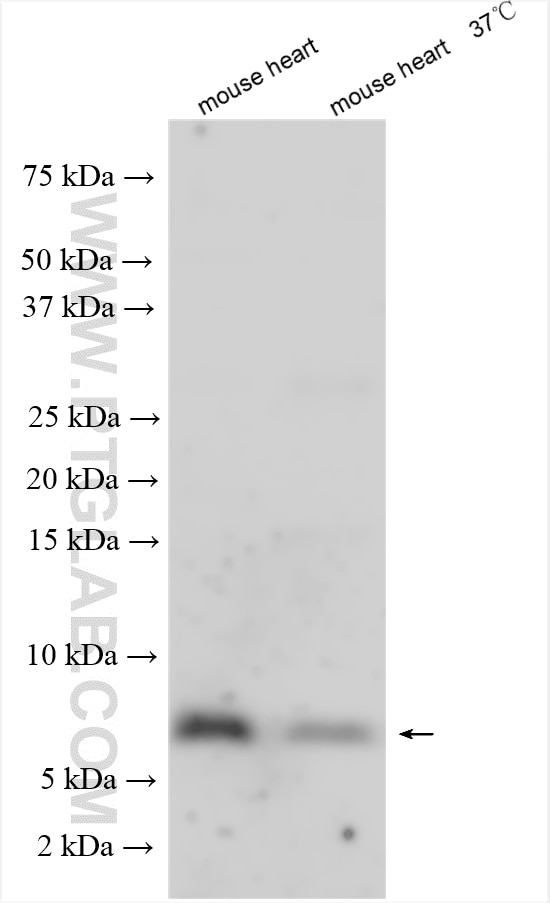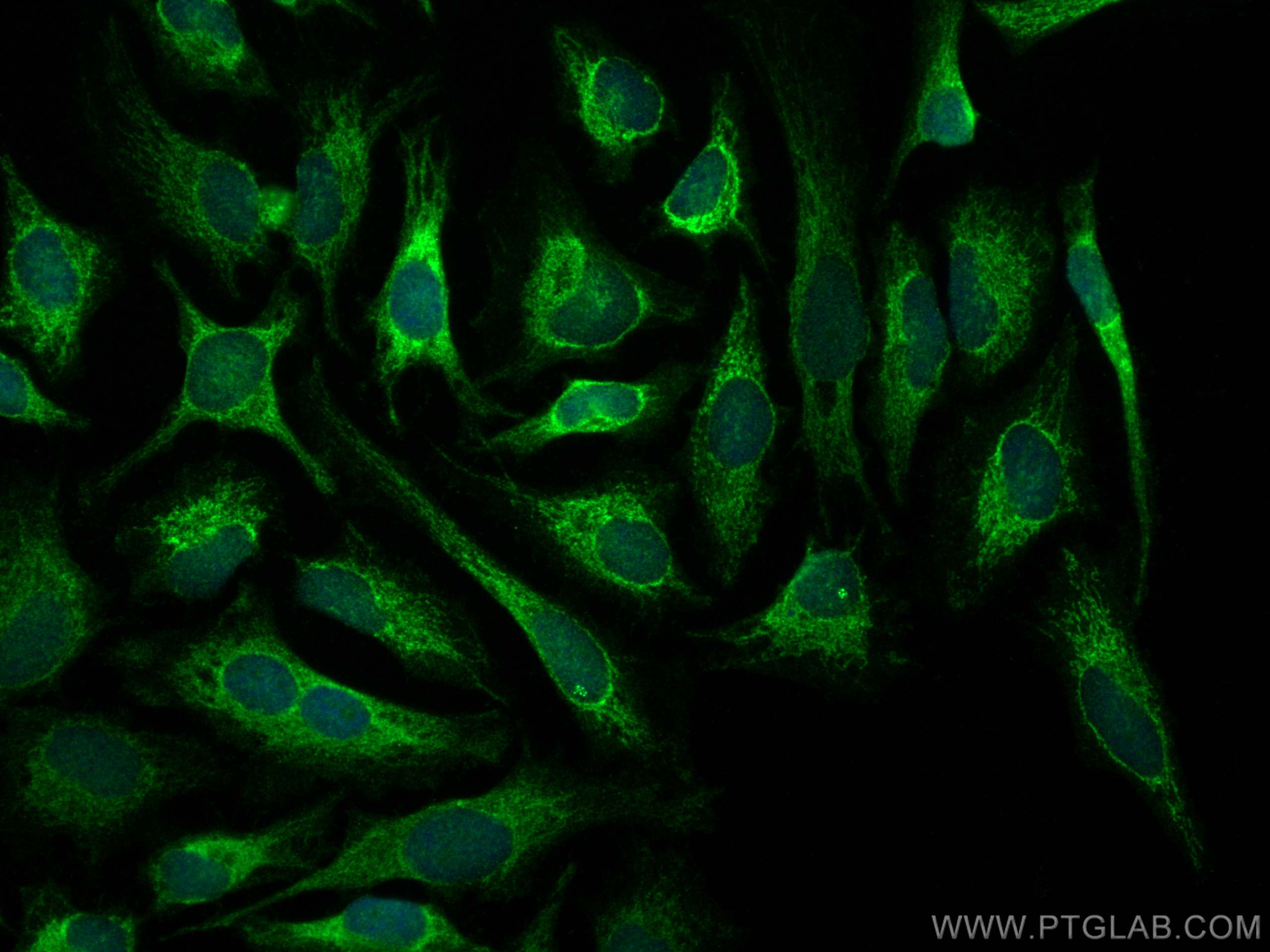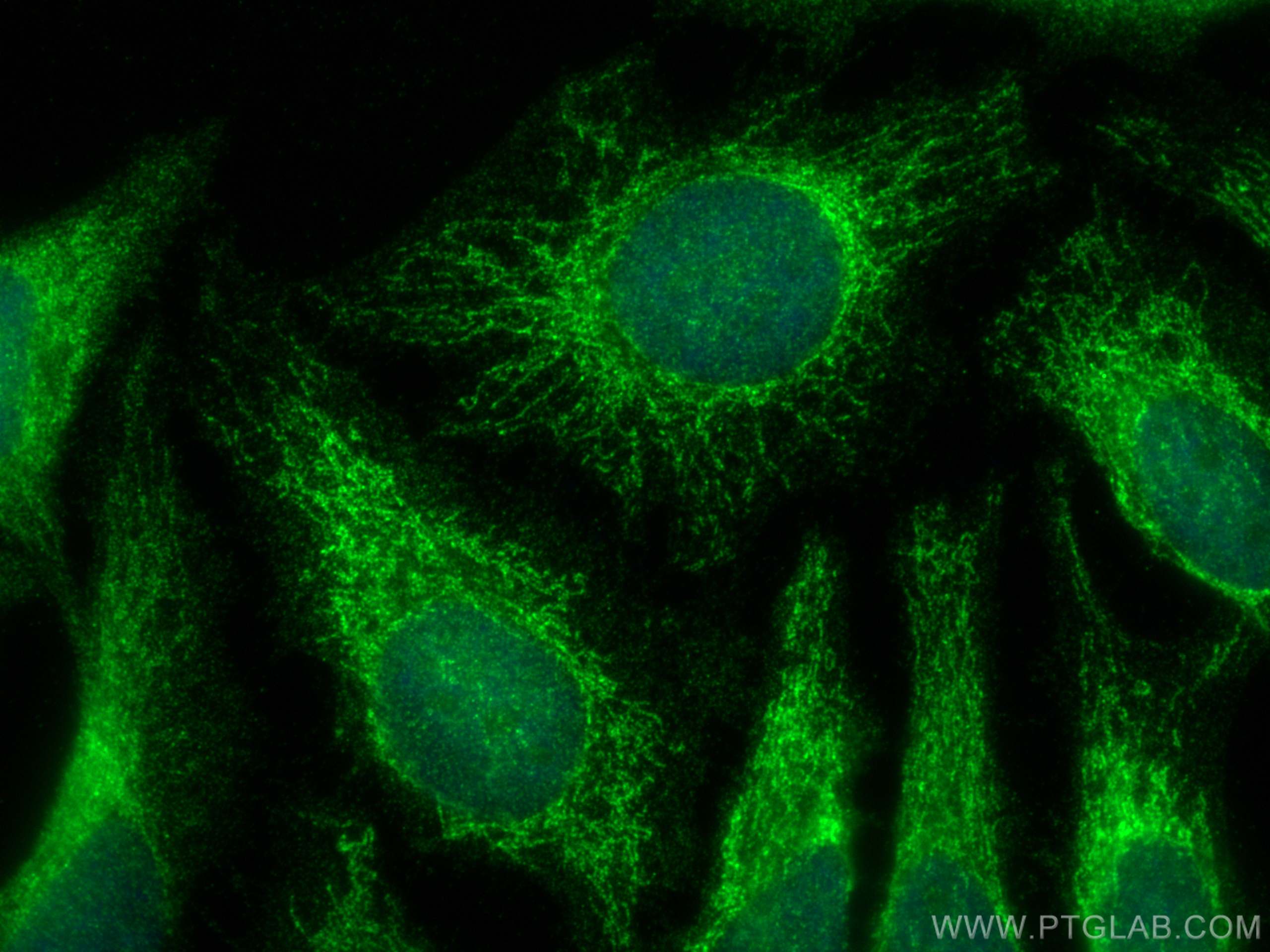ATP5E Polyklonaler Antikörper
ATP5E Polyklonal Antikörper für WB, IF/ICC, ELISA
Wirt / Isotyp
Kaninchen / IgG
Getestete Reaktivität
human, Maus
Anwendung
WB, IF/ICC, ELISA
Konjugation
Unkonjugiert
Kat-Nr. : 15408-1-AP
Synonyme
Geprüfte Anwendungen
| Erfolgreiche Detektion in WB | Mausherzgewebe, 37℃ incubated mouse heart tissue |
| Erfolgreiche Detektion in IF/ICC | HeLa-Zellen |
Empfohlene Verdünnung
| Anwendung | Verdünnung |
|---|---|
| Western Blot (WB) | WB : 1:1000-1:4000 |
| Immunfluoreszenz (IF)/ICC | IF/ICC : 1:200-1:800 |
| It is recommended that this reagent should be titrated in each testing system to obtain optimal results. | |
| Sample-dependent, check data in validation data gallery | |
Produktinformation
15408-1-AP bindet in WB, IF/ICC, ELISA ATP5E und zeigt Reaktivität mit human, Maus
| Getestete Reaktivität | human, Maus |
| Wirt / Isotyp | Kaninchen / IgG |
| Klonalität | Polyklonal |
| Typ | Antikörper |
| Immunogen | ATP5E fusion protein Ag7672 |
| Vollständiger Name | ATP synthase, H+ transporting, mitochondrial F1 complex, epsilon subunit |
| Berechnetes Molekulargewicht | 6 kDa |
| Beobachtetes Molekulargewicht | 6 kDa |
| GenBank-Zugangsnummer | BC001690 |
| Gene symbol | ATP5E |
| Gene ID (NCBI) | 514 |
| Konjugation | Unkonjugiert |
| Form | Liquid |
| Reinigungsmethode | Antigen-Affinitätsreinigung |
| Lagerungspuffer | PBS with 0.02% sodium azide and 50% glycerol |
| Lagerungsbedingungen | Bei -20°C lagern. Nach dem Versand ein Jahr lang stabil Aliquotieren ist bei -20oC Lagerung nicht notwendig. 20ul Größen enthalten 0,1% BSA. |
Hintergrundinformationen
ATP synthase epsilon subunit (ATP5E) is an important subunit of ATP synthase, which is located in the stalk region of the F1 sector. F1-ATPase is the catalytic portion of mitochondrial ATP synthase, which produces ATP from ADP and inorganic phosphate (Pi). ATP5E is widely expressed in tissues. The calculated molecular weight of ATP5E is 6 kDa (PMID: 36625260).
Protokolle
| PRODUKTSPEZIFISCHE PROTOKOLLE | |
|---|---|
| WB protocol for ATP5E antibody 15408-1-AP | Protokoll herunterladen |
| IF protocol for ATP5E antibody 15408-1-AP | Protokoll herunterladen |
| STANDARD-PROTOKOLLE | |
|---|---|
| Klicken Sie hier, um unsere Standardprotokolle anzuzeigen |




